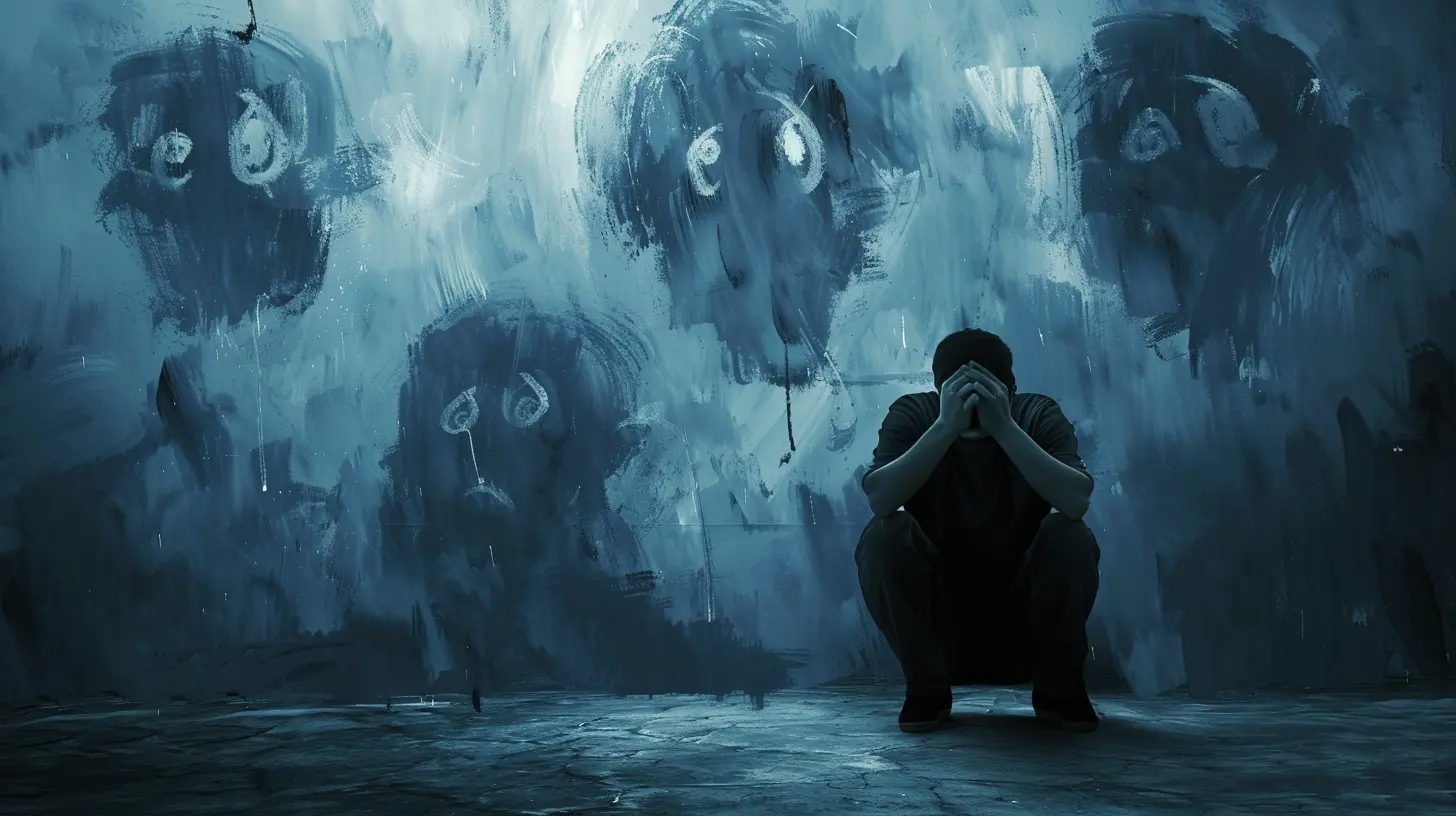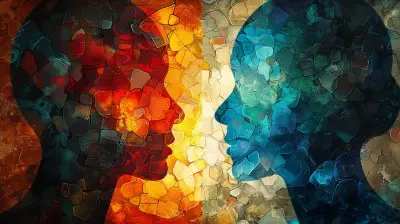The Impact of Learned Helplessness: Seligman’s Contributions to Depression Research
6 June 2025
Ever felt like no matter what you do, nothing changes? Like you're stuck in a never-ending cycle of bad luck, failure, or just plain exhaustion? Welcome to the world of learned helplessness—a psychological phenomenon that explains why some people simply stop trying.
This concept, first introduced by Martin Seligman, has played a crucial role in understanding depression, human behavior, and motivation. But what exactly is learned helplessness, and how does it shape our mental health? Let’s break it down in the simplest (and quirkiest) way possible.

What Is Learned Helplessness?
Imagine you're a rat (I promise this gets interesting). Scientists put you in a box where you get a little electric shock. If there's a lever and you press it, the shocks stop. Simple enough. You learn that pressing the lever = no more pain.Now, take another rat and give it shocks too—but this time, nothing stops them. No matter what it does, the pain continues. Eventually, this rat gives up. Even when later given a way to escape, it doesn't try. It has learned that nothing it does matters.
That, in a nutshell, is learned helplessness—when repeated negative experiences teach an individual that they have no control over their situation, leading to passivity, hopelessness, and even depression.

Seligman’s Shockingly Brilliant Discovery
In the 1960s, Martin Seligman and his colleagues conducted experiments (yes, involving dogs) that formed the foundation of learned helplessness theory.The Dog Experiment
- Dogs were divided into three groups:1. Group One: No shocks (lucky pups!).
2. Group Two: Shocks, but they could stop them by pressing a lever.
3. Group Three: Shocks, with no way to stop them (ouch).
After this, all the dogs were placed in a new environment where they could easily escape the shocks by jumping over a barrier.
Guess what happened?
The dogs from Groups One and Two quickly escaped. But the dogs from Group Three—who had learned they had no control—just lay there and took the shocks, even though freedom was literally a small jump away.
This was groundbreaking. If dogs could learn helplessness, could humans, too?
Seligman believed the answer was a resounding YES.

How Learned Helplessness Applies to Humans
Ever felt stuck in a toxic job, a bad relationship, or an unsolvable situation? You try to change things, but after repeated failures, you stop trying altogether—even when escape becomes possible.This is how learned helplessness shows up in daily life:
- Depression – Feeling powerless to improve your situation.
- Education – Kids who struggle with math may eventually stop trying.
- Workplace Burnout – Employees who feel their efforts don’t matter stop pushing for success.
- Relationships – Staying in unhealthy relationships because past attempts to leave failed.
The mental toll? Frustration, anxiety, low self-esteem, and—most significantly—depression.

Learned Helplessness and Depression: The Connection
Seligman took his research a step further. He theorized that learned helplessness could be a major factor in depression.His studies showed that many depressed individuals see life as hopeless because they believe they have no control over their happiness. If you've ever heard someone say, “Nothing I do matters,” that’s learned helplessness in action.
Seligman and his colleagues found that:
- Depressed individuals often attribute failures to internal (“I’m just not good enough”), stable (“I’ll always be this way”), and global (“Everything in my life is a disaster”) causes.
- This pessimistic thinking reinforces helplessness, creating a negative feedback loop that keeps them stuck.
In other words, depression and learned helplessness go hand in hand.
Breaking Free: Can We Unlearn Helplessness?
The good news? YES! Just like we can learn helplessness, we can also unlearn it.Seligman later developed Positive Psychology, which focuses on resilience, optimism, and personal control as tools to combat helplessness.
Here are some ways to reclaim control over your life:
1. Challenge Negative Thinking
Instead of saying, “I always fail,” try, “This didn’t work, but I can try another approach.” The way we talk to ourselves shapes our mindset.2. Small Wins, Big Impact
Set tiny, achievable goals to prove to yourself that you CAN make progress. Success—even in tiny doses—rewires the brain.3. Change Your Environment
If you’re stuck in a toxic space, change something—your job, your habits, your surroundings. A new environment can reset your mindset.4. Learn from Failure (Instead of Fearing It)
Failure isn’t a dead-end; it’s feedback. Every setback teaches something. The trick is to see obstacles as stepping stones instead of confirmation of defeat.5. Practice Gratitude and Optimism
Yes, it sounds cliché, but focusing on the good reverses hopelessness. Research shows that gratitude physically changes the structure of the brain to build resilience.6. Therapy and Support
Sometimes, reversing learned helplessness requires a helping hand—whether through therapy, coaching, or a strong support system. Cognitive Behavioral Therapy (CBT) is particularly effective in rewiring helpless thought patterns.Why Seligman’s Work Still Matters Today
Seligman’s research doesn’t just apply to psychology students—it affects all of us.- It explains why people stay in bad situations (abusive relationships, dead-end jobs).
- It sheds light on mental health struggles like depression and anxiety.
- It offers tools to regain control over our lives.
His work also paved the way for fields like positive psychology, resilience training, and even leadership development.
Final Thoughts
Learned helplessness isn’t just some abstract academic concept—it’s something many of us unknowingly experience. Whether in school, work, relationships, or mental health struggles, it influences how we react to failure, setbacks, and challenges.But here’s the key takeaway: You are not stuck. Helplessness is learned, but it can also be unlearned. With the right mindset, support, and persistence, you can break free from the cycle and take back control.
So, the next time you feel powerless? Remember—you’re not! You’ve just been trained to think you are. And training can be rewritten.
all images in this post were generated using AI tools
Category:
Psychological TheoriesAuthor:

Paulina Sanders
Discussion
rate this article
3 comments
Tilly Mathews
Seligman’s insights on learned helplessness brilliantly illuminate the mechanics of depression and the path to resilience.
June 18, 2025 at 5:00 PM

Paulina Sanders
Thank you for your insightful comment! Seligman's work indeed provides a crucial understanding of learned helplessness and its implications for depression and resilience.
Victoria Patterson
Great insights! Understanding learned helplessness is crucial for addressing depression. Seligman’s work offers hope and pathways to empower individuals towards resilience and healing.
June 9, 2025 at 3:18 AM

Paulina Sanders
Thank you for your thoughtful comment! I appreciate your recognition of Seligman's work and its importance in fostering resilience in those affected by depression.
Jemima Bailey
Seligman’s exploration of learned helplessness highlights the profound links between mindset and mental health, offering critical insights into depression's underlying mechanisms and treatment strategies.
June 6, 2025 at 4:39 AM

Paulina Sanders
Thank you for your insightful comment! Seligman’s work indeed emphasizes the crucial connection between mindset and mental health, shedding light on effective approaches to understanding and treating depression.



